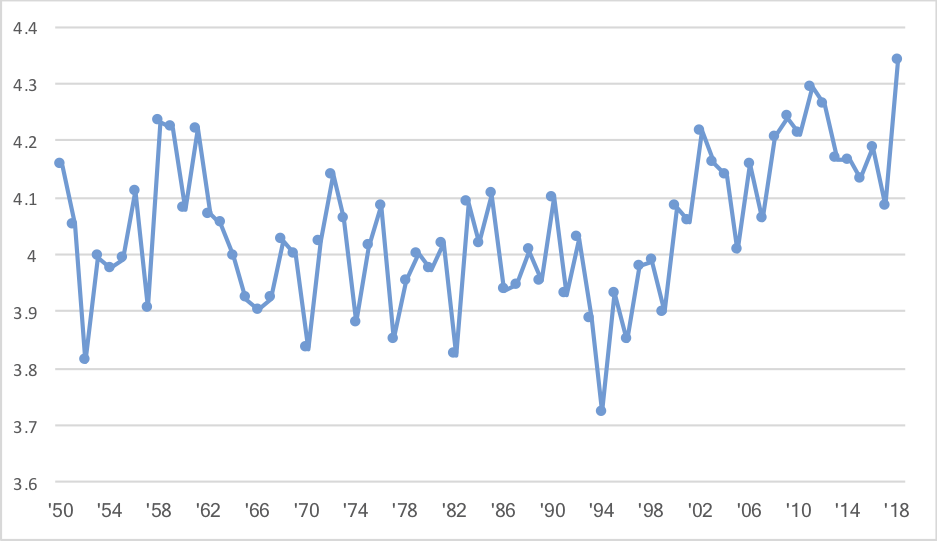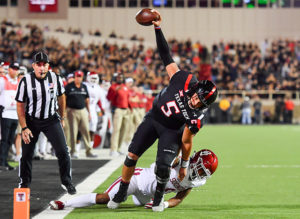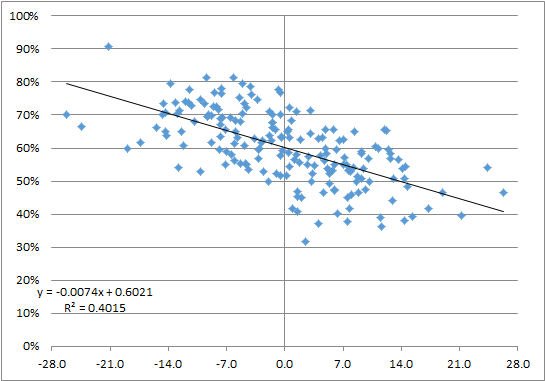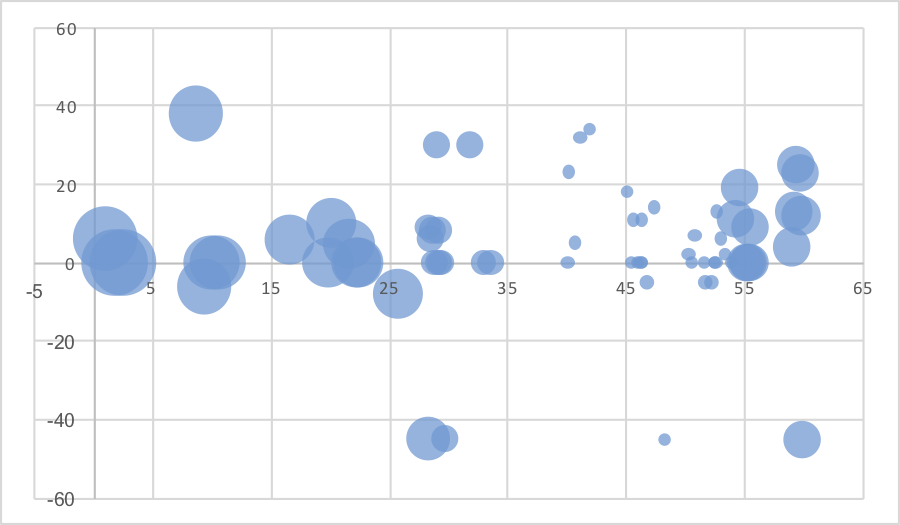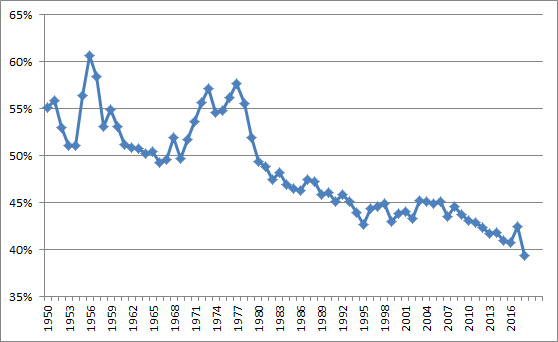A couple of weeks ago, I wrote that over his 4-year career, Jameis Winston had been great at picking up first downs and also at throwing interceptions. Well, now that Ryan Fitzpatrick’s interception rate has ticked back up, the same is true for the 2018 Bucs as a whole.
Jameis Winston leads all players with a 6.8% interception rate through 9 weeks. But Fitzpatrick’s 3.8% interception rate puts him as the 5th most INT-prone passer of the first half of the ’18 season. On the other hand, there are just five players this season who have picked up first downs on 40% of their dropbacks so far: Jared Goff (43.2%), Patrick Mahomes (41.0%), and Philip Rivers (40.9%) — three of the top MVP candidates — and then Fitzpatrick (42.6%) and yes, Winston (40.4%).
On the team level, the Buccaneers have picked up a first down on 41.5% of dropbacks (calculated based on a league-high 148 passing first downs, divided by the team’s 333 pass attempts and 24 sacks). The Rams lead the league in this metric at 43.3%, followed by Tampa Bay, Kansas City, the Chargers, and the Saints. The worst five teams are the Bills (22.2%), the Cardinals, the Browns, the Jets, and the Cowboys.
When it comes to interception rate, the Bills have the worst performance in that category, too, at 5.5%. But here, Tampa Bay ranks 2nd in the NFL at 5.1%. Usually, there’s a pretty strong relationship between these two categories: teams with good interception rates have good first down rates, and teams with bad interception rates have bad first down rates. Tampa Bay is a very… very large outlier. No other team ranks in the top 9 in first down rate and bottom 9 in interception rate, while Tampa Bay ranks 2nd and 2nd-from the bottom. The Bengals (11th-best 1st down rate, 10th-worst INT rate) are the only other team in the top/bottom 12 of both metrics, and the 49ers, Texans, and Lions are the only other teams in the top/bottom 15.
On the flip side, Baltimore and Washington are the anti-Bucs. The Ravens rank 25th in first down rate, but 9th (aka 24th-from-the-bottom) in interception rate, while the Redskins are 22nd in first down rate and 5th (aka 28th from the bottom) in interception rate. Yes, Alex Smith is still your anti-gunslinger.
On the graph below, I have plotted where each team fares in first down rate (X-Axis) and interception rate (Y-Axis). Interception rate is plotted in reverse order, so a low (good) INT rate is high in the graph; therefore, you want to be in the upper right corner of the graph. The worst passing teams — the Bills, Cardinals, and Jets — are in the lower left corner of the graph. And all alone in the bottom right? That’s where you’ll find Tampa Bay, the biggest passing outlier this season. [continue reading…]


